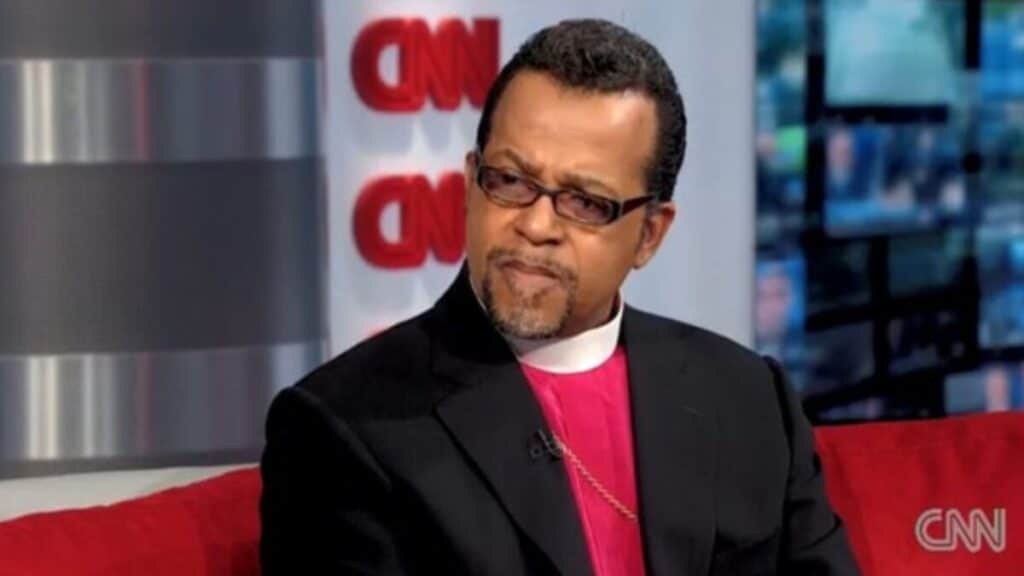Introduction
Bishop Carlton Pearson stands as one of the most influential and controversial figures in modern Christianity. From his early days as a traditional Pentecostal preacher to his dramatic theological shift toward what he termed the “Gospel of Inclusion,” Pearson’s journey has captivated the attention of religious scholars, media figures, and everyday believers alike. Beyond his spiritual impact, Carlton Pearson net worth has been a topic of interest, reflecting his career in ministry, gospel music, and public speaking. As of 2025, Carlton Pearson net worth continues to be analyzed in relation to his book sales, speaking engagements, and influence in the religious community. This comprehensive profile explores his life, career, theological evolution, family, and financial standing in depth.
Born in San Diego, California, and rising to prominence in Tulsa, Oklahoma, Pearson’s story is one of remarkable transformation. His theological pivot away from traditional evangelical teachings about hell and salvation cost him his 5,000 member megachurch but opened new doors as he became a voice for a more inclusive interpretation of Christianity. Despite the challenges, Carlton Pearson net worth has remained a subject of curiosity, influenced by his gospel music, books, and public speaking engagements. Over the years, Carlton Pearson net worth has fluctuated due to shifts in his ministry and career path, yet his financial impact in the religious world remains undeniable. This article examines the many facets of Bishop Carlton Pearson’s life and legacy.
Early Life and Education
Carlton D’Metrius Pearson was born on March 19, 1953, in San Diego, California. Raised in a devoutly Pentecostal family, his early years were deeply steeped in traditional Christian faith. His father and grandfather were both ministers in the Church of God in Christ (COGIC), one of the largest Pentecostal denominations in America.
Pearson displayed remarkable charisma and public speaking abilities from a young age. His natural talent for communication, combined with his passionate faith, made him a standout figure even as a youth. Those who knew him in his formative years often remarked on his exceptional ability to connect with audiences through both spoken word and song.
For his higher education, Pearson attended Oral Roberts University in Tulsa, Oklahoma, where he earned a Bachelor of Arts degree in Biblical Literature/English Bible. His time at this prominent evangelical institution proved formative, as he developed a close relationship with Oral Roberts himself, who became something of a mentor to the young Pearson.
“I was always searching, even when I thought I had all the answers. Education opened doors in my mind that religion had locked.” Bishop Carlton Pearson
Bishop Carlton Pearson’s Professional Life and Career
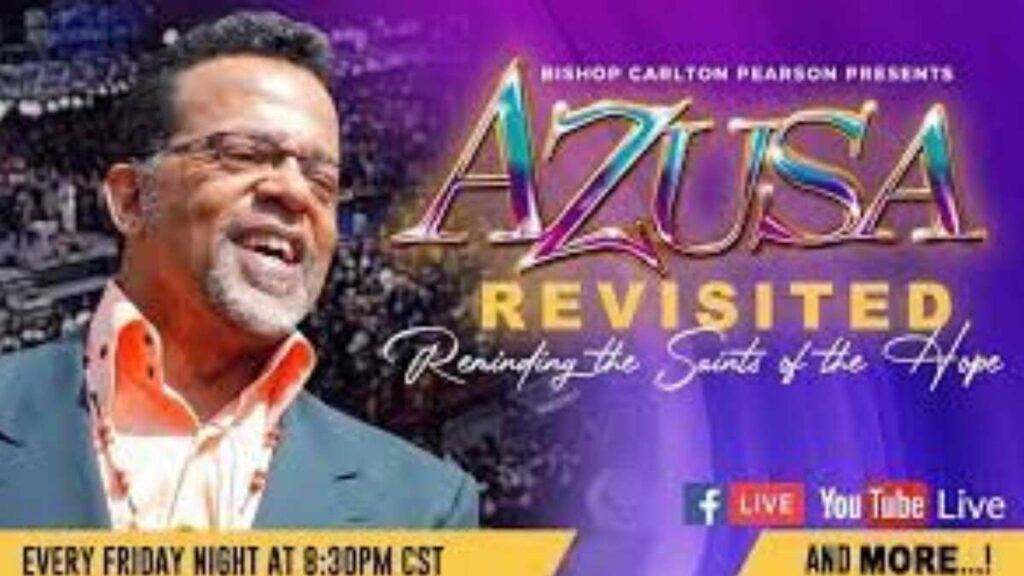
Rise to Prominence in Evangelical Circles
Pearson’s career began with tremendous promise in evangelical circles. After graduating from Oral Roberts University, he quickly established himself as a dynamic preacher with exceptional oratorical skills. His ability to blend passionate preaching with soulful gospel music created an electrifying presence that drew large crowds.
In 1981, Pearson founded Higher Dimensions Evangelistic Center in Tulsa, Oklahoma, which would eventually grow into Higher Dimensions Family Church. By the early 1990s, the congregation had swelled to over 5,000 members, making it one of the most significant megachurches in the region.
Key Career Milestones:
- 1981: Founded Higher Dimensions Evangelistic Center
- 1984: Began hosting the nationally televised program “Carlton Pearson Presents”
- 1990s: Appointed to the College of Bishops in the Church of God in Christ
- 1993: Launched the annual Azusa Conference, drawing up to 50,000 attendees
- 1997: Served on the Board of Regents for Oral Roberts University
During the height of his evangelical career, Pearson’s influence extended far beyond his local congregation. He became a regular figure on Trinity Broadcasting Network (TBN) and other Christian television outlets. His annual Azusa Conference became one of the most significant gatherings in Pentecostal Christianity, attracting tens of thousands of attendees and featuring prominent gospel artists and preachers from around the country.
Gospel Music Career
In addition to his preaching ministry, Pearson established himself as a significant figure in gospel music. His powerful baritone voice and charismatic stage presence made him a beloved performer within Christian music circles.
| Album | Release Year | Notable Tracks |
|---|---|---|
| Live at Azusa | 1995 | “Jesus Loves Me,” “We Worship You” |
| Live at Azusa 2 | 1997 | “Come In The Room,” “He’s Able” |
| Live at Azusa 3 | 1999 | “Everybody Praise,” “We’ve Come to Praise Him” |
| Live at Azusa 4 | 2001 | “Great Is Thy Faithfulness,” “We Acknowledge You” |
His albums received critical acclaim within the gospel music industry, and he collaborated with numerous renowned gospel artists. Pearson’s musical talents added another dimension to his ministry, allowing him to reach audiences through both spoken and sung messages.
The Gospel of Inclusion and Theological Shift
The Pivotal Moment
In what would become the defining turning point of his career and life, Pearson experienced what he describes as an epiphany while watching a television program about the genocide in Rwanda in the late 1990s. Troubled by the idea that the victims would be condemned to hell simply for not accepting Christ, Pearson began questioning fundamental evangelical teachings about salvation and eternal damnation.
This internal theological crisis eventually led him to embrace what he termed the “Gospel of Inclusion” – a perspective that argues for universal reconciliation and suggests that all people will eventually be saved through Christ’s sacrifice, regardless of their explicit faith commitment during their earthly life.
The Core Tenets of Pearson’s Gospel of Inclusion:
- Universal reconciliation through Christ’s sacrifice
- Rejection of eternal conscious torment (traditional hell doctrine)
- Emphasis on God’s love rather than judgment
- Inclusion of all faiths within God’s redemptive plan
- Focus on earthly justice and compassion rather than afterlife concerns
The Fallout
The consequences of Pearson’s theological shift were swift and severe within evangelical circles. His once thriving congregation at Higher Dimensions dwindled from thousands to mere hundreds as news of his new theological position spread.
By 2006, financial difficulties forced Pearson to sell the church building, and the once mighty Higher Dimensions ministry had effectively collapsed. Many of his former allies in evangelical leadership distanced themselves from him, and he was largely ostracized from the community that had once celebrated him as one of its brightest stars.
“Sometimes your breakthrough looks exactly like your breakdown. What seemed like my destruction became my greatest liberation.” Bishop Carlton Pearson
Reinvention and New Ministry Focus
Following the collapse of his traditional ministry, Pearson reinvented himself. He affiliated with the United Church of Christ and later with the Unitarian Universalist Association, denominations known for their progressive theological positions. He founded New Dimensions Church to continue ministry within this new theological framework.
In the years since his doctrinal shift, Pearson has focused his message on spiritual inclusivity, social justice, and interfaith dialogue. He has become an outspoken advocate for LGBTQ+ inclusion in religious communities and has addressed a wide range of progressive religious gatherings.
Bishop Carlton Pearson’s Church and Ministry Evolution
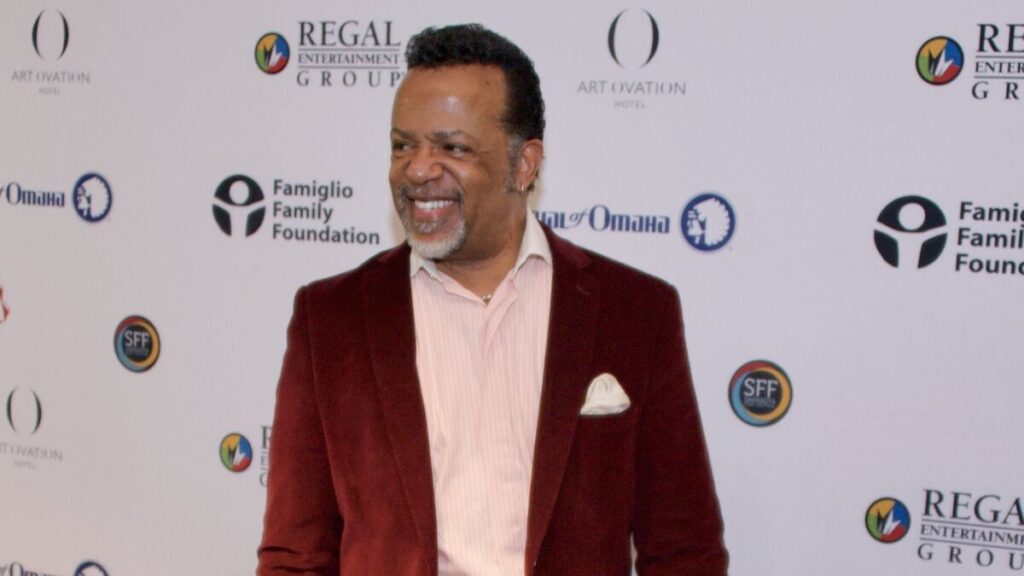
Higher Dimensions Family Church (1981 . 2006)
At its peak, Higher Dimensions Family Church in Tulsa was one of the most vibrant megachurches in America. The congregation boasted over 5,000 active members, and services were characterized by dynamic preaching, exuberant worship, and a blend of traditional Pentecostal practices with contemporary elements.
The church campus included multiple buildings and facilities to accommodate its extensive programs, including youth ministries, community outreach initiatives, and educational offerings. Higher Dimensions became known for its racial diversity, somewhat unusual in the often segregated landscape of American Christianity.
Higher Dimensions Collapse and Transition
As Pearson’s theological views evolved toward inclusionism, his church experienced:
- A dramatic decline in attendance, dropping from 5,000 to under 200
- Significant financial challenges as tithes and offerings decreased
- Loss of key staff members and leadership
- Forced sale of the church building in 2006
- Relocation to smaller, rented facilities
New Dimensions and Later Ministry Models
Following the collapse of Higher Dimensions, Pearson established New Dimensions, a smaller, more progressive congregation. Rather than attempting to rebuild a traditional church structure, he embraced a more fluid model of ministry, often conducting services in rented spaces and focusing on reaching those who felt alienated by traditional religious institutions.
In recent years, Pearson has increasingly functioned more as a traveling speaker, author, and thought leader rather than as the pastor of a conventional congregation. This shift has allowed him to reach diverse audiences across denominational and religious boundaries.
Bishop Carlton Pearson’s Books and Publications
Pearson has authored several books that outline his theological journey and spiritual perspectives. His written work provides deeper insight into the evolution of his thought and the principles that guide his current ministry.
Major Published Works:
- The Gospel of Inclusion: Reaching Beyond Religious Fundamentalism to the True Love of God and Self (2007)
- His most significant work, detailing his theological shift and the principles of inclusive Christianity
- God Is Not a Christian, Nor a Jew, Muslim, Hindu God Dwells with Us, in Us, Around Us, as Us (2010)
- Explores interfaith perspectives and the universal nature of divine presence
- The Word at Risk: Evangelicals and the Battle for Authority (2004)
- Written during his transitional period, examining questions of biblical interpretation
- The Name, The Unnamable, The Nameless (2013)
- A more mystical exploration of divine nature beyond religious categorization
These publications have helped solidify Pearson’s position as a significant voice in progressive Christianity and have provided a theological framework for those questioning traditional evangelical teachings.
Personal Life: Bishop Carlton Pearson’s Family
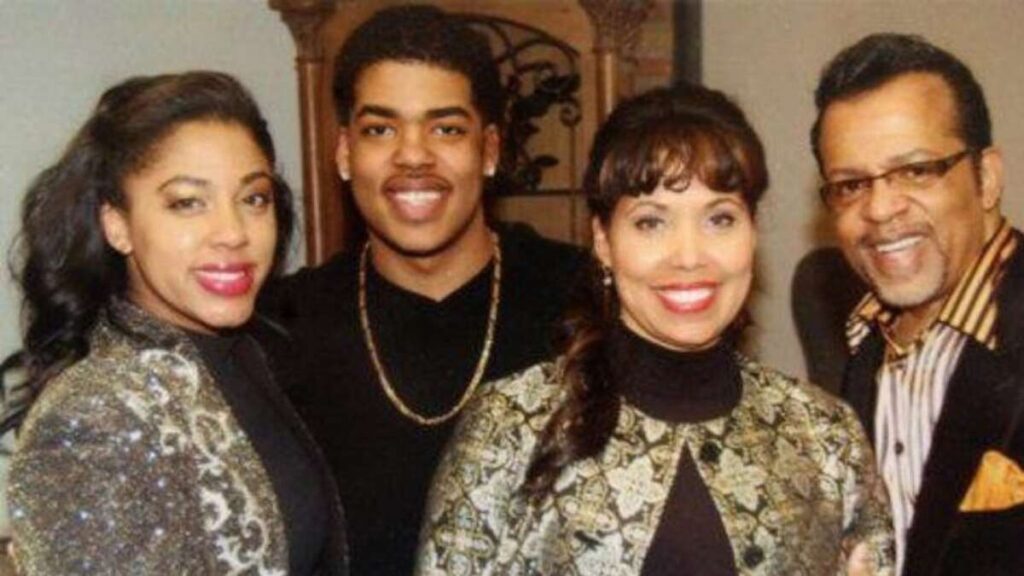
Marriage to Gina Marie Gauthier
Bishop Carlton Pearson has been married to Gina Marie Gauthier since 1993. Their union has weathered significant storms, including the collapse of his ministry and the financial and social challenges that accompanied his theological transition.
Gina has been described as a steadfast presence throughout Pearson’s controversial journey. While maintaining a lower public profile than her husband, she has supported his ministry evolution while also developing her own identity and pursuits.
Children and Family Life
The Pearsons have three children:
- Julian D’Metrius Pearson Their eldest son
- Majestè Amour Pearson Their daughter
- Adam Louis Pearson Their youngest son
The family has maintained a relatively private home life despite Carlton’s public profile. Pearson has spoken occasionally about the challenges his children faced during his ministry transition, particularly in navigating the social complexities of being the children of a controversial religious figure in a conservative community like Tulsa.
In 2018, the Pearsons relocated from Tulsa to Chicago, seeking a fresh start in a more progressive environment and to be closer to supportive ministry connections.
Physical Attributes and Personal Presence
Bishop Carlton Pearson stands approximately 5’10” tall with a solid build. Throughout his career, he has maintained a dignified and commanding physical presence that complements his oratorical abilities. Now in his early 70s (born March 19, 1953), Pearson has gracefully aged while maintaining the powerful voice and charismatic presence that have long characterized his public appearances.
His personal style has evolved over the years, from the more formal attire typical of Pentecostal bishops in his earlier career to a somewhat more relaxed but still distinguished appearance in recent years. Pearson’s warm smile and engaging manner have remained consistent features of his public persona throughout these transitions.
Bishop Carlton Pearson’s Net Worth
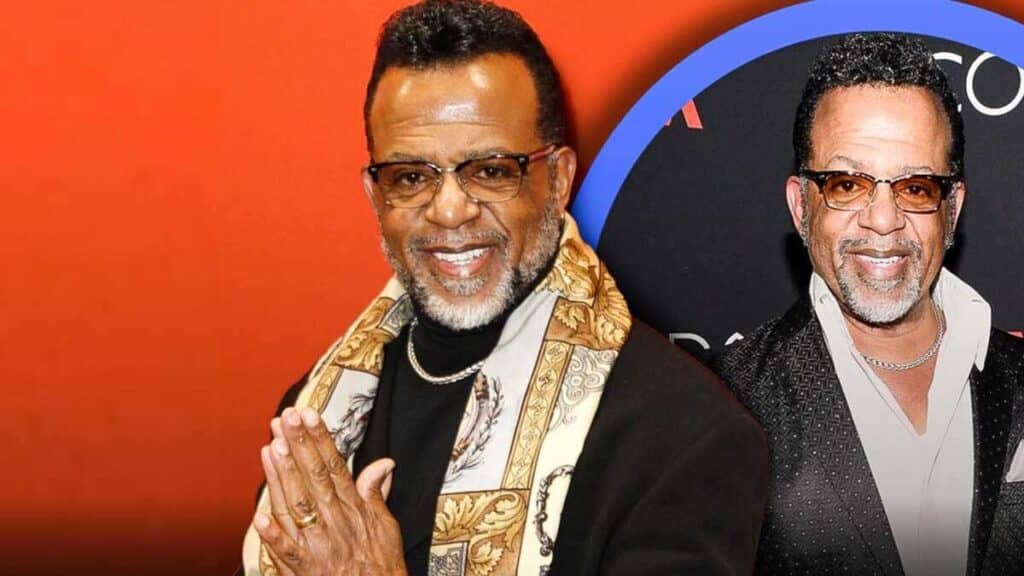
Current Financial Status
As of 2025, Bishop Carlton Pearson’s estimated net worth stands at approximately $3.5 million. This represents a significant recovery from the financial challenges he faced following the collapse of his Tulsa ministry but falls well below the wealth accumulated by many of his contemporaries who maintained their positions within evangelical circles.
Income Sources and Revenue Streams
Pearson’s current financial portfolio includes diverse revenue streams:
- Book Royalties: His published works continue to generate steady income, particularly “The Gospel of Inclusion” which has found new audiences in progressive Christian circles.
- Speaking Engagements: Pearson commands fees ranging from $10,000 to $25,000 for speaking appearances at churches, universities, and conferences.
- Consulting and Coaching: He provides spiritual and leadership coaching to religious leaders and organizations navigating theological transitions.
- Media Appearances: Documentary appearances, interviews, and occasional television contributions provide supplementary income.
- Online Ministry Content: Digital courses, webinars, and subscription based content have become increasingly significant revenue sources.
Estimated Monthly Income Breakdown:
| Income Source | Estimated Monthly Revenue (2025) |
|---|---|
| Book Royalties | $8,000.$12,000 |
| Speaking Engagements | $20,000.$50,000 |
| Consulting/Coaching | $5,000.$15,000 |
| Media Appearances | $2,000.$8,000 |
| Online Content | $4,000.$10,000 |
| Total Monthly: | $39,000.$95,000 |
This translates to an estimated yearly income between $468,000 and $1,140,000, with significant fluctuations based on his speaking schedule and media projects.
Financial Journey and Recovery
Pearson’s financial trajectory has been marked by dramatic ups and downs:
- Prosperity Period (1990s): During the height of his evangelical career, Pearson enjoyed substantial wealth from his megachurch salary, speaking tours, and gospel music releases.
- Financial Crisis (2003 .2008): Following his theological shift, Pearson experienced severe financial hardship, including:
- Loss of church salary and benefits
- Declining speaking invitations
- Decreased music royalties
- Legal expenses related to church property
- Gradual Recovery (2000.2018): Book publications, documentary appearances, and growing interest from progressive religious communities helped stabilize his finances.
- Renewed Financial Success (2019.2025): A documentary about his life, increased interest in progressive Christianity, and his expanding digital presence have contributed to financial recovery.
Controversies and Challenges
Theological Rejection and Heresy Accusations
The most significant controversy of Pearson’s career emerged from his embrace of universal reconciliation.
Key Criticisms Faced:
- Accusations of abandoning biblical authority
- Claims that he was leading followers toward spiritual deception
- Allegations of compromising core Christian doctrines for cultural relevance
- Suggestions that financial or personal motives drove his theological shift
Financial and Legal Challenges
The collapse of Higher Dimensions Church brought significant financial strain. Pearson faced:
- Difficulty meeting mortgage obligations on church property
- Challenges in maintaining personal financial stability as income sources diminished
- Legal complications related to church governance and property ownership
- Transition costs as he established new ministry models
Media Attention and Public Scrutiny
Pearson’s story attracted significant media attention, bringing both opportunities and challenges:
- Netflix Documentary: “Come Sunday” (2018) starring Chiwetel Ejiofor dramatized his theological journey
- This American Life: Featured his story in an episode titled “Heretics”
- News Coverage: Both supportive and critical coverage from religious and mainstream media
While this attention brought renewed interest in Pearson’s message, it also subjected his personal and theological journey to intense public scrutiny.
Legacy and Impact of Bishop Carlton Pearson
Influence on Progressive Christianity
Despite the controversial nature of his theological shift, Pearson has become an influential voice in progressive Christian circles. His willingness to publicly question fundamental evangelical doctrines opened space for others to express similar doubts and explore alternative theological frameworks.
Many former evangelicals who have moved toward more progressive expressions of faith cite Pearson as an inspiration or catalyst in their own journeys. His emphasis on divine love over divine judgment has resonated with those seeking a more inclusive understanding of Christianity.
Case Study: Impact on Religious Leaders
Pastor Marcus Reynolds (pseudonym)
- Former Southern Baptist minister in Texas
- Encountered Pearson’s teachings in 2010 while struggling with questions about eternal punishment
- Initially rejected Pearson’s perspective but gradually found himself drawn to inclusive theology
- Eventually transitioned his congregation toward a more progressive theological position
- Credits Pearson with providing language and frameworks for navigating this difficult transition
Impact on Gospel Music Industry
Though his active recording career diminished after his theological shift, Pearson’s musical contributions left a lasting impact on gospel music. His Azusa conference recordings featured innovative blends of traditional gospel with contemporary elements and brought together diverse artists who might not otherwise have collaborated.
Several gospel artists who were influenced by Pearson’s early work have themselves gone on to push boundaries within religious music, creating more inclusive and innovative expressions of faith through song.
Bishop Carlton Pearson’s Social Media and Public Presence
In recent years, Pearson has embraced digital platforms to reach new audiences with his message of inclusive spirituality. His social media presence has grown significantly since 2020, with content focusing on spiritual growth, social justice, and interfaith dialogue.
Social Media Following (2025):
- Instagram: 185,000 followers
- Twitter/X: 220,000 followers
- Facebook: 310,000 followers
- YouTube: 175,000 subscribers
His online content typically blends:
- Short form video teachings
- Livestreamed discussions with diverse religious thinkers
- Announcements about speaking engagements and publications
- Commentary on current social and religious issues
- Personal reflections on his ongoing spiritual journey
Conclusion
As Bishop Carlton Pearson enters his seventies, his legacy continues to evolve. From Pentecostal prodigy to controversial theologian to elder statesman of progressive Christianity, his journey embodies both the possibilities and costs of theological transformation in the public eye. Throughout his career, Carlton Pearson net worth has reflected his shifting influence, from leading a megachurch to navigating the financial impact of his theological stance. Even as his views changed, Carlton Pearson net worth remained a topic of interest, shaped by his books, speaking engagements, and media appearances.
His story raises profound questions about the nature of religious authority, the boundaries of orthodoxy, and the price of following one’s conscience when it leads away from established traditions. For some, Pearson represents a cautionary tale about theological drift; for others, he exemplifies courage in the face of institutional pressure. Amid these debates, Carlton Pearson net worth has fluctuated, reflecting both the financial success of his early ministry and the challenges that came with his theological shift. Despite controversy, Carlton Pearson net worth remains a testament to his enduring impact through books, speaking engagements, and media appearances.

James is a seasoned fashion blogger with over a decade of experience in the industry. His keen eye for trends and insightful commentary make him a trusted voice in fashion. Passionate about style evolution, James combines his extensive knowledge with a unique perspective, offering readers fresh and engaging content. Follow his journey as he navigates the ever-changing world of fashion on Fashion Vib.

